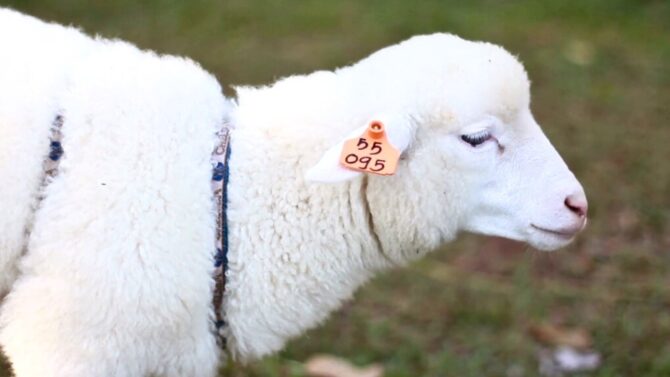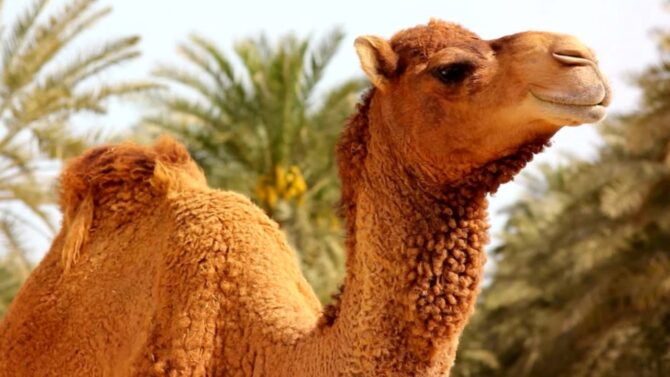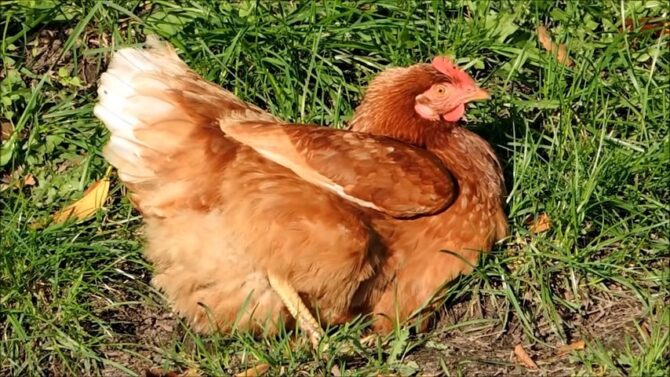Domesticated animals have played a pivotal role in human society for countless centuries. They have been our loyal companions, our sources of sustenance, and our diligent workers.
From ancient times to the present day, these animals have been intricately woven into the fabric of our daily lives, fulfilling various roles and responsibilities. Currently, there are over 100 distinct species of domesticated animals across the globe.
Each of these species boasts its own unique history, characteristics, and purpose in human societies. In this comprehensive blog post, I will delve into the top 14 domestic animals that stand out due to their economic value, cultural significance, and widespread popularity as household pets.
Furthermore, I will journey through the fascinating history of animal domestication, shedding light on how and why certain animals became an integral part of human communities. Additionally, we’ll explore the myriad benefits these animals bestow upon us, enriching our lives in numerous ways.
14. Sheep

One of the friendliest and oldest domesticated animals, Sheep, have been intertwined with human history for thousands of years. They are primarily raised for their wool, a natural fiber that has been used to weave warm and durable textiles for generations.
Beyond wool, sheep are a valuable source of meat, often referred to as lamb or mutton, which is a staple in many cuisines worldwide. Additionally, sheep’s milk is used to produce a variety of cheeses, some of which are highly sought after.
In certain regions, sheep also serve as draft animals, assisting in agricultural tasks and transportation.
Interesting fact
Did you know that sheep have a field of vision of around 300 degrees, allowing them to see behind themselves without turning their heads? This wide field of vision helps them detect predators from various angles.
13. Goats

Goats, with their adaptability and resilience, are found in diverse habitats across the globe. They are cherished for their milk, which is not only consumed as a beverage but also transformed into cheeses, yogurts, and other dairy products.
Goat meat, known as chevon or goat meat, is relished in various cultures for its distinct flavor. Beyond food, some goat breeds produce fibers like cashmere and mohair, which are used in luxury textiles.
Additionally, goats are employed for draft power in certain areas, and their grazing habits make them effective for controlling weeds and pests in pastures or orchards.
Interesting fact
Goats have rectangular pupils, which allow them to see a wide panoramic view of their surroundings. This unique eye structure helps them navigate rocky terrains and detect predators from a distance.
12. Horses

Horses, with their grace and power, have played a pivotal role in human civilization. Historically, they were essential for transportation, connecting cities, and facilitating trade.
In modern times, while their role in transportation has diminished, they remain central to recreational activities like riding and equestrian sports. Competitive events, such as show jumping, dressage, and racing, showcase the athleticism and beauty of these animals.
Furthermore, horses continue to be used for draft power, especially in areas where machinery is less accessible or preferred.
Interesting fact
Horses have the largest eyes of any land mammal. These large eyes not only provide them with a wide field of vision but also enable them to see in low-light conditions, which is crucial for their survival in the wild.
11. Donkeys
One of the most hardworking animals, donkeys, often seen as the humble counterparts to horses, are incredibly hardy and dependable creatures. They have been employed for transportation and labor for centuries, especially in terrains where they excel due to their stamina and sure-footedness.
Beyond their work contributions, donkeys have a gentle nature, making them suitable for companionship. In recent years, their therapeutic qualities have been recognized, leading to their use in therapy programs for individuals with physical and emotional challenges.
Their calming presence and interactive nature make them perfect for such roles.
Interesting fact
Contrary to popular belief, donkeys are not stubborn but are actually very intelligent and cautious animals. Their perceived “stubbornness” is often them assessing situations for potential dangers before proceeding, a trait that has kept them safe in the wild for millennia.
10. Rabbits

Rabbits, with their gentle demeanor and soft fur, serve multiple purposes in human societies. They are extensively farmed for their tender meat, which is considered a delicacy in many cultures.
Additionally, their fur is harvested and used in the fashion industry for its warmth and luxurious feel. Beyond their economic value, rabbits have found their way into countless homes as beloved pets.
Their playful nature and manageable size make them ideal companions for both children and adults.
Interesting fact
Rabbits have an impressive ability to dig intricate burrow systems called “warrens.” These warrens can have multiple rooms for sleeping, nesting, and escaping predators.
Some wild rabbit warrens have been known to spread over a vast area with many different entrances and exits.
9. Fish

Fish play a multifaceted role in human civilization. They are a primary source of protein for billions, with fisheries and aquaculture industries thriving globally.
Sport fishing, on the other hand, offers both recreational and economic benefits, attracting enthusiasts and tourists alike. Beyond consumption and recreation, fish, especially the vibrant and exotic varieties, are sought after for ornamental purposes, gracing aquariums in homes and public spaces.
Interesting fact
Some fish, like the lungfish, have lungs and can breathe air. This adaptation allows them to survive in stagnant water or during droughts when oxygen levels in the water are low.
8. Bees
Bees, the tiny powerhouses of the insect world, are indispensable for their contributions to agriculture and the environment. They are primarily cultivated for their sweet honey, a natural sweetener cherished worldwide.
Additionally, beeswax, a byproduct of their hives, finds use in cosmetics, candles, and various other industries. Most crucially, bees play a pivotal role in pollination, ensuring the propagation of plants and the production of fruits and vegetables.
Interesting fact
Bees are capable of recognizing human faces. In a study, bees were shown pictures of human faces and trained to associate them with sweet treats.
The bees were able to remember and recognize the faces they were shown, although they don’t live very long.
7. Silkworms

Silkworms, the caterpillar of the silk moth, have been integral to textile industries for millennia. They are meticulously cultivated for their silk cocoons, which are unraveled to produce the luxurious and shimmering silk fabric.
This fabric, historically associated with royalty and affluence, continues to be in high demand for its elegance and comfort.
Interesting fact
Silkworms are not worms but are actually the larvae of the silk moth. A single silkworm can produce a thread of silk about 900 meters long in its short 2-3 month life span.
6. Camels

Camels, often dubbed the “ships of the desert,” are perfectly adapted to arid regions with their ability to endure extreme conditions. They have been invaluable for transportation and labor, especially in desert terrains where other beasts of burden would falter.
Beyond their labor contributions, camels are also a source of sustenance. Their milk, rich in nutrients, is consumed in many cultures, and their meat, though less common, is also relished.
Interesting fact
Camels have three eyelids and two rows of eyelashes to protect their eyes from blowing sand in desert environments. Additionally, their humps don’t store water but fat, which they can metabolize for water and energy when resources are scarce.
5. Llamas

Llamas, native to the rugged terrains of South America, are versatile creatures. Historically, they have been employed for transportation, adeptly navigating the Andean mountains with heavy loads.
Their strength and endurance make them invaluable for labor in challenging landscapes. Additionally, llamas are sheared for their soft and warm wool, which is woven into various textiles.
Their meat, though not as widespread as other livestock, is consumed in certain regions for its unique flavor.
Interesting fact
Llamas are known to hum when they’re anxious, curious, worried, or content. Each hum can have a different meaning depending on the situation and the individual llama’s personality.
4. Pigs
Pigs, with their keen intelligence and adaptability, are another cornerstone of the livestock sector. They are primarily raised for their succulent meat, rich lard, and tough leather.
Beyond these products, pigs play a unique role in waste management in certain cultures. They efficiently convert food scraps and agricultural by-products into valuable protein, showcasing a sustainable approach to farming.
Interesting fact
Pigs are among the smartest domesticated animals and are even considered more intelligent than dogs. They can solve puzzles, use tools, and have been trained to play video games with joysticks.
3. Chickens

Chickens, the most widespread poultry bird, are a staple in diets worldwide, offering both eggs and meat. With a population in the billions, they are a testament to their economic importance.
Apart from their culinary contributions, chickens play a role in integrated pest management. They forage for insects, reducing the need for chemical pesticides and contributing to a balanced ecosystem.
Interesting fact
Chickens have an impressive memory and can recognize and remember over 100 different faces, both of other chickens and humans. They also have their own complex communication system, using different vocalizations to warn of predators or to call chicks.
2. Cats

Cats, with their graceful demeanor and mysterious allure, rank as the second most popular domesticated animal, with a global count exceeding 250 million. Many households cherish cats for their self-sufficiency, low maintenance, and impeccable grooming habits.
Apart from being delightful companions, cats have historically been valued for their prowess in controlling rodent populations and safeguarding granaries and homes from pests.
Interesting fact
Cats have a special reflective layer behind their retinas called the tapetum lucidum. This layer enhances their night vision by reflecting light that passes through the retina back into their eyes.
This capability is why a cat’s eyes can appear to glow in the dark.
1. Dogs

Dogs, often referred to as “man’s best friend,” hold the title of the most popular domestic animal globally, boasting a staggering number of over 400 million household pets. Their unparalleled companionship, unwavering loyalty, and innate ability to offer emotional support make them an integral part of many families.
Beyond being cherished family members, dogs serve a multitude of practical purposes. They shepherd livestock, guide the visually impaired, offer therapeutic assistance to those with disabilities, and play crucial roles in law enforcement by detecting drugs and explosives.
These are just a few of the many domestic animals that are important to human society. Each animal has its own unique history and purpose, and all of them play a vital role in our lives.
Interesting fact
Dogs have a “third eyelid” known as a nictitating membrane. It’s a thin layer that helps protect their eyes and keep them moist.
Some believe this membrane is a remnant from a time when dogs were more nocturnal creatures.
The History of Domestication
The domestication of animals began thousands of years ago when humans began to selectively breed wild animals for desirable traits. The first animals to be domesticated were probably dogs and goats, followed by sheep, pigs, and cattle.
Domesticated animals have provided humans with a number of benefits, including food, clothing, transportation, and companionship. They have also played a role in the development of agriculture and industry.
The Economic Importance
Domestic animals are an important part of the global economy. The livestock sector alone accounts for over 40% of the agricultural GDP in developing countries.
Domestic animals also provide a source of income for many people, through the sale of meat, milk, eggs, and other products.
The Cultural Significance
Domestic animals play an important role in many cultures around the world. They are often seen as symbols of wealth, status, and prosperity.
In some cultures, domestic animals are also considered sacred or divine.
Benefits of Domestic Animals
Domestic animals provide a number of benefits to humans, including:
- Food: Domestic animals provide us with a variety of food products, including meat, milk, eggs, and honey.
- Clothing: The fur and wool of some domestic animals are used to make clothing.
- Transportation: Domestic animals, such as horses and donkeys, have been used for transportation for centuries.
- Labor: Domestic animals, such as oxen and camels, have been used for labor, such as plowing fields and transporting goods.
- Companionship: Domestic animals provide companionship and emotional support. They can help reduce stress, anxiety, and loneliness.
- Therapy: Domestic animals can be used as therapy animals to help people with a variety of conditions, such as autism, anxiety, and depression.
- Education: Domestic animals can be used to teach children about responsibility, empathy, and caring for others.
- Research: Domestic animals are used in research to study a variety of diseases and conditions.
- Conservation: Domestic animals can be used to help conserve endangered species.
FAQs

What are the health risks associated with owning a domestic animal?
There are a number of health risks associated with owning a domestic animal, including:
- Allergies: Some people are allergic to dander or saliva from domestic animals. This can cause symptoms such as sneezing, coughing, and watery eyes.
- Zoonoses: Zoonoses are diseases that can be transmitted from animals to humans. Some common zoonotic diseases include rabies, salmonella, and ringworm.
- Bites and scratches: Domestic animals can bite or scratch, which can cause injuries. In some cases, bites and scratches can lead to infection.
- Parasites: Domestic animals can carry parasites, such as fleas, ticks, and worms. These parasites can be harmful to both animals and humans.
What are the resources available to help me care for my domestic animal?
There are various resources at your disposal to assist you in taking care of your pet. These encompass:
- Your veterinarian: Your veterinarian can provide you with information and advice on how to care for your pet’s health.
- Pet stores: Pet stores sell food, toys, and other supplies for pets. They also often have trained staff who can answer your questions about pet care.
- Animal shelters: Animal shelters can provide you with information about adopting a pet and can also offer support and resources for pet owners.
- Online resources: There are many websites and blogs that offer information about pet care.
Final Words
Domestic animals have been a part of human society for centuries, and they continue to play an important role in our lives. They provide us with food, companionship, labor, and a variety of other benefits.
It is important to remember that domestic animals are sentient creatures who deserve to be treated with respect. We must ensure that they are provided with adequate food, water, shelter, and veterinary care.
We must also protect them from cruelty and neglect.






